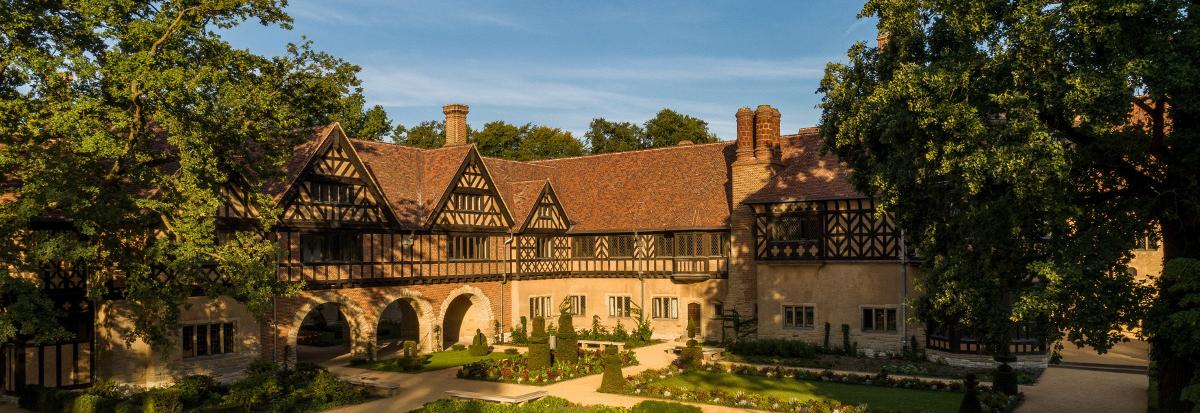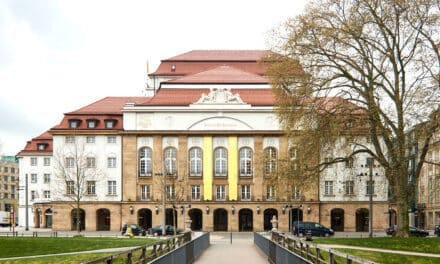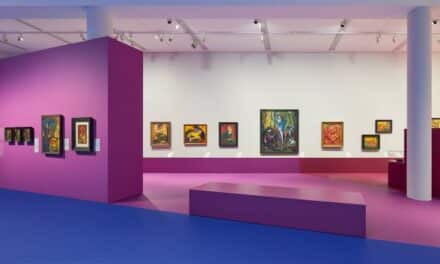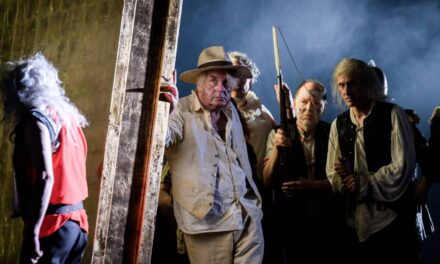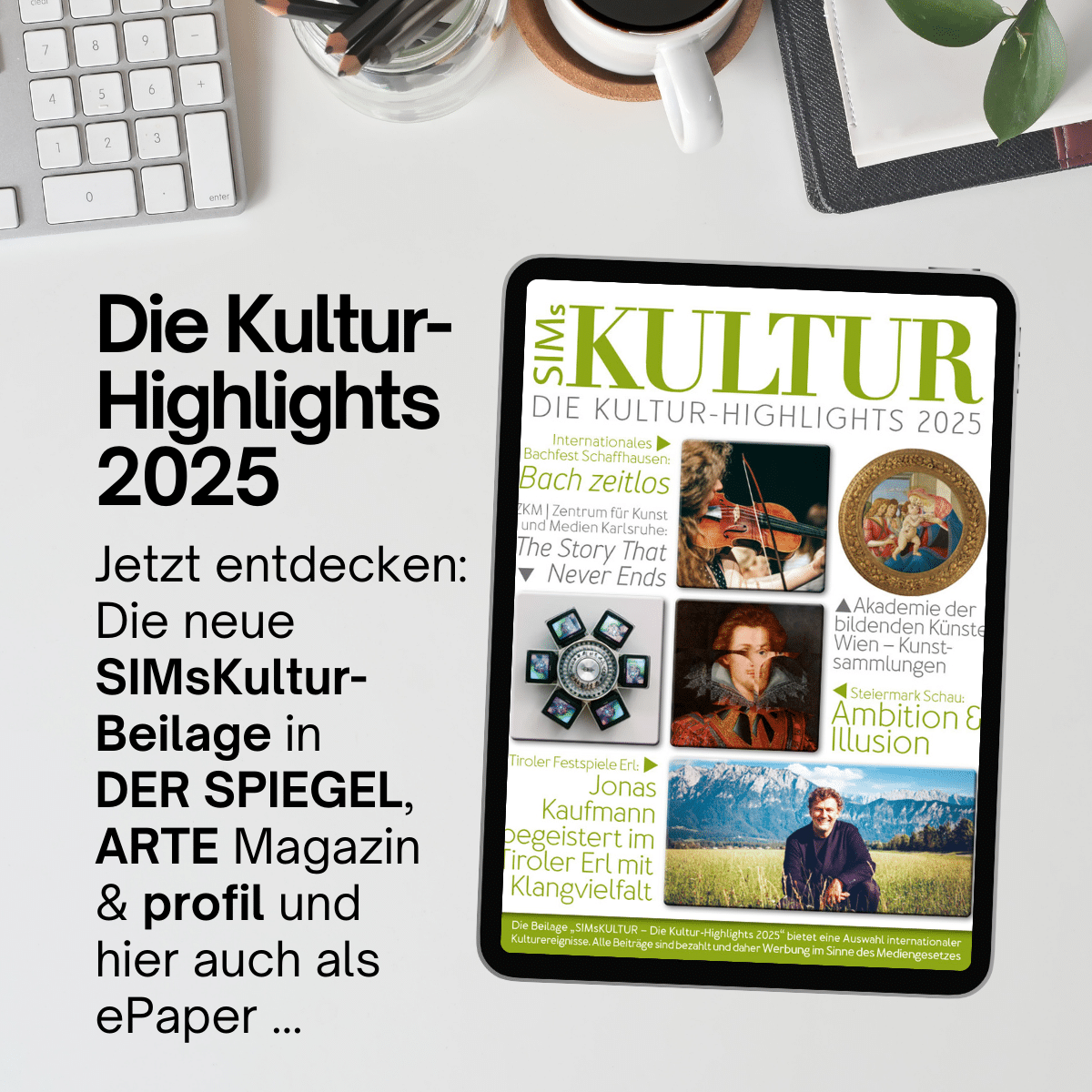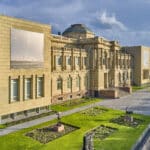Cecilienhof Palace, built between 1913 and 1917 according to plans by Paul Schultze-Naumburg in the English country house style, is the last palace built by the Hohenzollerns. Kaiser Wilhelm II had the residence built for his eldest son, Crown Prince Wilhelm. Until 1945, it was the residence of the last German crown prince and princess, Wilhelm and Cecilie of Prussia, who had previously lived in the Marble Palace.
The appearance of the palace was adapted to the landscape by using traditional materials such as brick and wood. It blends in beautifully with the northern part of the New Garden, which was laid out as an English landscape garden at the end of the 18th century.
To disguise the true size of the building with its 176 rooms, the architect cleverly grouped the individual structures around several inner courtyards. The center of the house is the large living hall, which is accessible via a vestibule and from which the state rooms of the crown prince and princess lead off. From here, a mighty wood-carved staircase leads to the upper floor. The stately rooms are divided into an area for the lord of the manor with a smoking room, a library and a breakfast room, and an area for Cecilie with a music salon, a writing room and a cabin designed in the style of a ship's cabin.
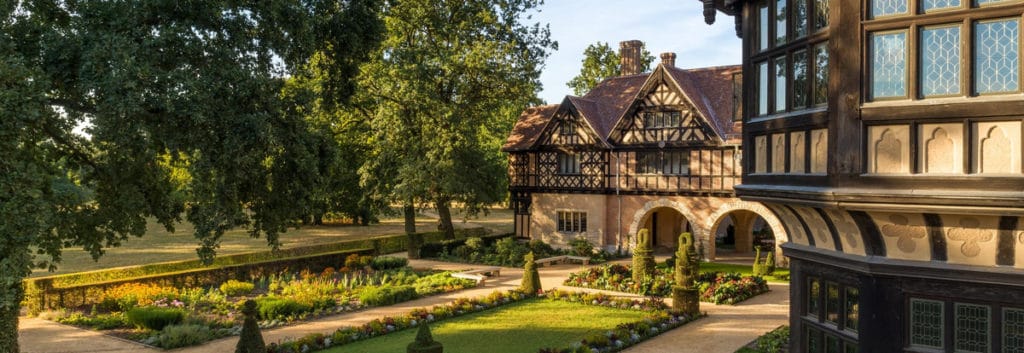
Cecilienhof Palace © Stiftung Preußische Schlösser und Gärten Berlin-Brandenburg
From July 17 to August 2, 1945, the summit meeting of the victorious powers of the Second World War took place here, attended by the "Big Three", the American President Harry S. Truman, the British Prime Ministers Winston Churchill and Clement Attlee and the Soviet head of state Joseph Stalin.
The Potsdam Conference is one of the most important historical events of the 20th century. It is regarded worldwide as a symbol of the end of the Second World War and the outbreak of the Cold War, which led to the division of Europe by the "Iron Curtain" and the construction of the "Wall". The "Potsdam Agreement" adopted at Cecilienhof Palace laid the foundations for a new order in Germany, Europe and the world after the Second World War. The border fortifications located not far from the building from 1961 to 1989 are an indirect consequence of the Potsdam Conference and therefore also part of the palace's history.
In the course of the Potsdam Conference, the main rooms were refurnished and the Red Star was laid out in the palace's courtyard of honor.
CURRENT EXHIBITION: Potsdam Conference 1945 - The Reorganization of the World
Special exhibition to mark the 75th anniversary of the Potsdam Conference
The Potsdam Conference is one of the most important historical events of the 20th century. It is regarded worldwide as a symbol of the end of the Second World War and the outbreak of the Cold War. The "Potsdam Agreement" adopted at Cecilienhof Palace laid the foundations for a new world order after 1945.
To mark the 75th anniversary of the Potsdam Conference, the Prussian Palaces and Gardens Foundation Berlin-Brandenburg (SPSG) is holding a special exhibition at Cecilienhof Palace from June 23, 2020 to October 31, 2021. Visitors will experience a multimedia journey back in time to the fateful days of the summer of 1945 at the authentic location. A factual and ideology-free presentation of the geopolitical decisions contrasts with emotionally moving voices of those affected. Well-known historical figures such as Churchill, Stalin and Truman are juxtaposed with the many "nameless" of history - including atomic bomb victims, displaced persons and collaborators. The special exhibition provides a multi-perspective view of a piece of world history. For the first time, the exhibition also includes the famous garden terrace as the location for the press photos of the "Big Three" in the wicker chairs.
Until 31.10.2021

